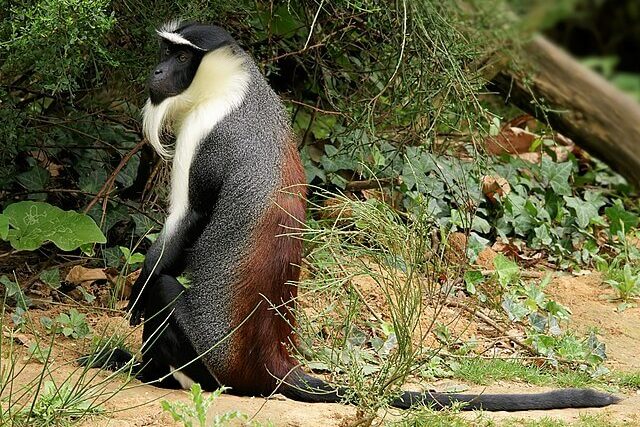
Researchers reveal that groups of animal species are disappearing at a rate 35 times higher than the historical average due to human activities.
This alarming development serves as further evidence that Earth is in the throes of a sixth mass extinction event, which is gaining momentum.
The study, recently published in the journal Proceedings of the National Academy of Sciences, scrutinised the extinction rate of closely related animal species over the last 500 years. The researchers discovered that in the absence of human impact, these species groups would have taken approximately 18,000 years to vanish. However, the rate of their extinction is accelerating.
The investigation identified at least 73 genera of mammals, birds, reptiles, and amphibians that have gone extinct since 1500. In the absence of human intervention, it was estimated that only two of these genera would have disappeared. Among the species lost are the elephant birds of Madagascar, moa from New Zealand, and Hawaiian moho honeyeaters.
Habitat destruction, the climate crisis, and illegal wildlife trade are the primary factors contributing to these losses. The study forecasts that these extinctions will intensify in the years to come. In a worst-case scenario where all currently endangered species groups vanish by the end of the century, the extinction rate would be 354 times higher than the average for the past million years.
“The current generic extinction rates are 35 times higher than expected background rates prevailing in the last million years under the absence of human impacts,” the report said.
This research zeroes in on “genera,” which is the plural form of “genus” – a taxonomic classification above species. It was anticipated that genera would experience a lower extinction rate than individual species, but the study found that they are similarly vulnerable.
Previous research, based on fossil records, suggested that prior to human influence, nearly one in 10,000 genera would vanish every century. Given the existence of approximately 5,400 known vertebrate genera (excluding fishes), it was expected that one genus would go extinct every 250 years if those rates persisted.
The authors of the study, Prof. Gerardo Ceballos and Prof. Paul Ehrlich, have previously drawn attention to the mass extinction event, comparing it to the catastrophe that wiped out the dinosaurs. They emphasise that this loss poses a significant threat to the continuation of human civilisation.
While the assertion of a sixth mass extinction is debated among some scientists, a 2019 assessment by the United Nations confirmed that one million species are at risk of disappearing due to human-induced environmental pressures.
“Such mutilation of the tree of life and the resulting loss of ecosystem services provided by biodiversity to humanity is a serious threat to the stability of civilisation. Immediate political, economic and social efforts of an unprecedented scale are essential if we are to prevent these extinctions and their societal impacts,” the study found.
Prof. Ceballos, who led the research and hails from the Universidad Nacional Autónoma de México, expressed that the study’s findings were even more dire than anticipated. However, he emphasised that there is still time to take corrective action.
“By losing all these genera, we are losing the foundations of the planet to have life in general and human life in particular. If you have a wall made of bricks, if you lose some, it won’t collapse but it won’t be as strong. If you lose many bricks, eventually it will collapse. The combination of the gases in the atmosphere that allows us to have life on the planet depends on plants, animals and organisms. People say that we are alarmist by saying that we expect a collapse. We are alarmist because we are alarmed,” he said.
“As dramatic as the results are, what is important to mention is that we still have time. The window of opportunity is closing rapidly. There is hope but we need to act quickly,” he added.
Ben Garrod, a professor of evolutionary biology and science engagement at the University of East Anglia, who was not involved in the study, regarded the research as a stark warning to humanity.
“The very framework to which all nature – including our own species – adheres is in serious jeopardy. With extinction rates from a whole range of species and species groups being so much higher than we’d typically expect, it’s hard to see why global governments, leading businesses and the general public are not doing everything possible to mitigate this devastating loss,” he said.
“Extinction is irreversible,” he added. “From a more human-centric perspective, it’s almost impossible to predict which of these losses will have a significant impact on our own species. It’s an existential gamble we should think very hard about before taking.”
——————————————————————————
At Natural World Fund, we are passionate about stopping the decline in our wildlife.
The decline in our wildlife is shocking and frightening. Without much more support, many of the animals we know and love will continue in their decline towards extinction.
When you help to restore a patch of degraded land through rewilding to forests, meadows, or wetlands, you have a massive impact on the biodiversity at a local level. You give animals a home and food that they otherwise would not have had, and it has a positive snowball effect on the food chain.
We are convinced that this is much better for the UK than growing lots of fast-growing coniferous trees, solely to remove carbon, that don’t actually help our animals to thrive.
This is why we stand for restoring nature in the UK through responsible rewilding. For us, it is the right thing to do. Let’s do what’s right for nature!
Donate today at https://naturalworldfund.com/ and join in the solution!

